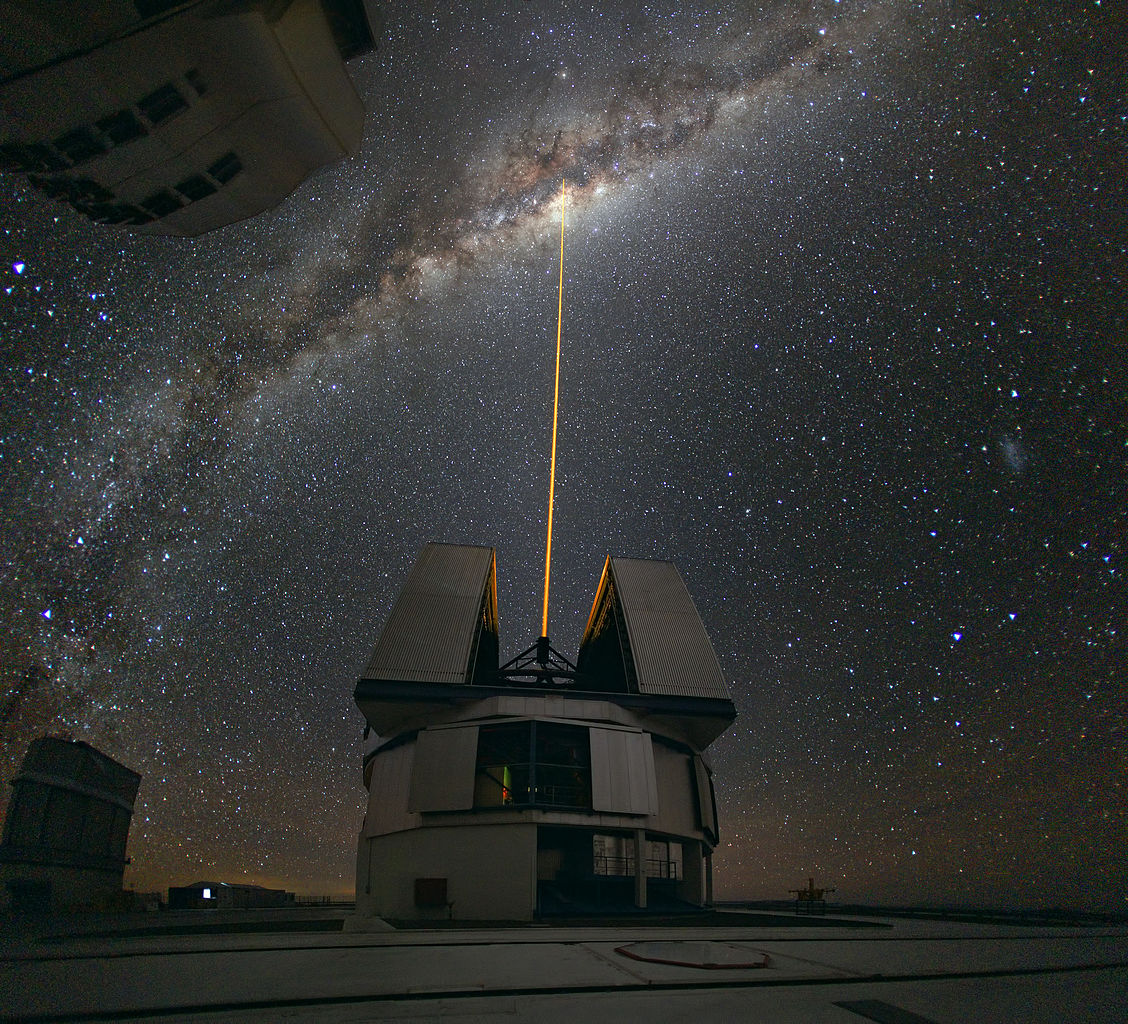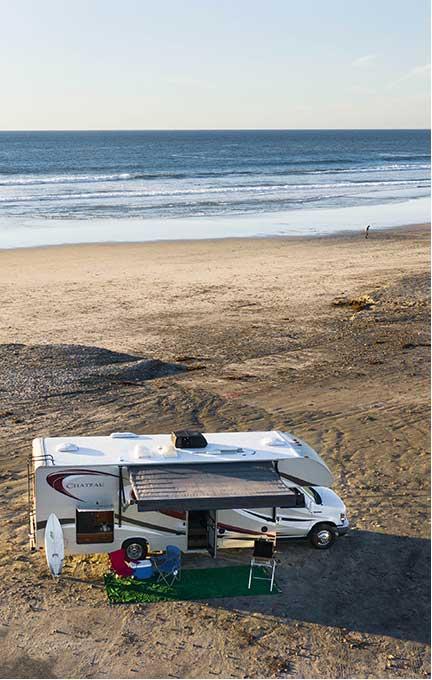Seeing the Milky Way in all its glory should be on everyone’s bucket list. In the ancient world—a world free from bright lights—it’s something you couldn’t help but marvel at.
Today, the light pollution in nearly any city makes the Milky Way all but invisible. When you do get to see it, on a moonless night and in its full splendor, it’s very hard not to be in complete awe. The sight is all at once humbling, inspiring, and for many, deeply spiritual. Totally bucket list-worthy!
Stock up on stargazing tools right here.
In this article, we’ll answer all the questions you may have about viewing this wonder, including:
- What is the Milky Way?
- When can you see it?
- Where can you go to see it?
- How can you make the most of your viewing experience?
Buckle up!
RVs for Rent Near You
What is the Milky Way?
In case you didn’t know, the Milky Way is a collection of between 100 and 400 billion stars, known as a galaxy. Our own sun is part of it, in the periphery, but not all the way out on the edge.
All the stars you can plainly see in the sky are part of our galaxy. When you see the visible Milky Way, you are looking toward the center of the galaxy. The light of those billions of stars, each indistinct on their own, collectively paints the sky with a soft white glow. At its very heart is a supermassive black hole that holds all the stars in sway.
When can you see the Milky Way?
First, you need the Milky Way to be in the sky above your part of the world at night. In North America, that’s during the summer months. In June through August, the Milky Way will be high in the night sky, making these the perfect viewing months. You can see it in the surrounding months earlier or later in the night, but it will be more on the horizon than straight overhead.
Secondly, you need the sky to be dark. The darker the better. Two things tend to cause problems: city lights and the moon.
To deal with city lights, you need to get out into a rural area, and the more remote the better. To find the darkest area near you, you can use the Dark Site Finder Map. You can scan every part of the world and check the light pollution levels. In the Eastern U.S., dark skies are pretty hard to come by, but in the west, they are quite abundant.

To minimize issues with the moon, you need to be able to track when the moon will rise and set. There are many tools for this. The Photographer’s Ephemeris is a pretty impressive site (and app) that will tell you everything you could want to know about light conditions at a particular location, at a particular time.
Finally, you need clear skies. You won’t see much of anything on a cloudy night. The ever-reliable weather.com can get you a forecast for any given location.

Where can you go to see the Milky Way?
The western interior national parks are probably the very best places to view the Milky Way. The southwest deserts are almost surefire winners too—if you can take the summer heat, that is. Not only are they incredibly dark, but there is almost never any cloud cover. They are also incredibly quiet, which makes the experience all the more magical.
Out east, it’s much much harder to find truly dark skies. There are a few, but you need to search a bit harder to find them and the weather is harder to predict. One resource you can look to is the International Dark-Sky Association, which keeps a list of officially recognized dark sky locations around the world as well as typical weather patterns for them.
Another possibility to consider is a night cruise. Many major port cities offer nighttime cruises specifically to get out of the city and look at the night sky. If you are on the east coast, that may be your best option.
10 of the Best Places in the U.S. to See the Milky Way
Snag the Lonely Planet book on Dark Sky parks for a full listing of the best stargazing spots. These are ten of the best locations in the United States to see the Milky Way in all her splendor.
- Bosque Del Apache Wildlife Preserve, New Mexico. In order to protect migrating birds, no lights are allowed in this park—which also makes for some fantastic stargazing.
Rent an RV near here - Natural Bridges National Monument, Utah. Dark skies framed by huge stone arches make for awe-inspiring celestial viewing.
Rent an RV near here - Big Bend National Park, Texas. The darkest skies in any national park in the U.S. = stargazing paradise.
Rent an RV near here - Death Valley National Park, Nevada. The landscape here is breathtaking, and so are the night skies—just watch out for that summer heat!
Rent an RV near here - Clayton Lake State Park, New Mexico. Look for dinosaur prints by day and planets by night in this wonderful wildlife refuge.
Rent an RV near here - Cherry Springs State Park, Pennsylvania. An official dark skies park on the east coast. A rare find indeed!
Rent an RV near here - Grand Canyon National Park, Arizona. Perhaps the greatest natural wonder on earth with a side of incredible night skies. What more could you want?
Rent an RV near here - Capital Reef National Park, Utah. One of America’s most underrated national parks and an incredible place to view the Milky Way.
Rent an RV near here - Mauna Kea, Hawaii. OK, so it’s not a prime RV destination, but it is an incredibly unique place to look at the stars from atop a volcano.
Rent an RV near here - Big Pine Key, Florida. It’s rare to find dark skies anywhere near the coast, but this spot is far enough away from the city lights to get the job done.
Rent an RV near here

How to Make the Most of Your Milky Way Viewing Experience
Here are a few recommendations on how to make your Milky Way viewing experience extra awesome.
Tip #1: Bring a reclining chair.
A portable chair that you can recline back in is a great way to enhance the experience. You can kick back, relax, and stare into the sky in comfort. Without this, your neck is going to get a bit stiff after a while.
Tip #2: Bring binoculars.
Just about any pair of binoculars is going to be a real eye-opener when viewing the milky way. The naked eye will see a fair number of stars, along with that milky glow, but look through the binoculars and you’ll start to see innumerable individual stars hiding in the glow.
Tip #3: Bring a blanket or jacket.
Even in the summer, it can get pretty chilly on a clear night. Bring along a jacket or a nice blanket to keep yourself from getting too chilled while stargazing. You’ll be very happy to have it.
Tip #4: Use red lights.
Lighting a fire or running around with a flashlight is going to annoy fellow stargazers and mess up your own vision for enjoying the Milky Way. Red-tinted lights are great for seeing what you need to see, but not messing up your night vision.
Tip #5: Attend a star party.
You can find star parties spread all across the country. These are events, generally open to the public, where you can hang out with amateur astronomers and ogle the night sky together. Hobbyists will have telescopes you can use to check out objects in the night sky. They will also be eager to answer any and all astronomy questions you might have. There are no great nationwide registries for them. Just Google “star party” and input the area you want to visit.
Tip #6: Bring along some listening material.
Even if you find looking at the Milky Way wondrous, you might find that long-term you want a bit more stimulation. I recommend bringing along some listening material for a longer trip. Any music you love will work wonders, though classical, or ambient is often especially great.
An astronomy podcast or a recording of Cosmos are winners if you want to learn about what exactly it is you’re looking at. A good book on tape, especially a space opera, is just the thing to spark your imagination. And of course, if you have company, stargazing is the perfect time for a great, in-depth conversation about life and the universe.
Tip #7: Read up and do your research.
The awesomeness that is the Milky Way is hard to wrap your head around. The scale of it is so far beyond our day-to-day experience. The more you know about it, the more amazing it is to look up at it and contemplate what you’re seeing. To get you started, this Space.com article gives you both a bit of history and a bevy of interesting facts.

Who to See the Milky Way With
It can be a great thing to go look into the infinite in solitude. But it’s also a fantastic experience to share.
Tips for Taking Kids to View the Stars
If you have kids, bring them to see the Milky Way and spark their imagination. Just keep in mind their attention spans can be a bit short. Having some food or drink on hand goes a long way in keeping them from getting antsy. Also, priming them with videos about space and the stars is a good way to pique their interest. Binoculars are especially cool for kids so they can appreciate that they are looking at many stars, not just a light in the sky. Finally, remember to keep them engaged in conversation, bring facts to share or stories you think will keep them from getting bored.
Viewing the Milky Way with Significant Others and Friends
If you’re a couple, it doesn’t get much more romantic than gazing at the night sky together in a quiet place. It’s the perfect setting for intimate conversation and declarations of love. Just make sure you are more or less alone before you get too passionate!
The Milky Way is also great for viewing with friends. There’s something about viewing the grandness of the cosmos that can make us want to connect with other people. Sharing a profound moment with others brings you closer and creates bonds that can last a lifetime.
Hit the Road and See the Stars
Ready to check the Milky Way off your bucket list? Head over to Outdoorsy and rent an awesome RV for your next stellar adventure! And here’s where you can shop our curated store for stargazing supplies.











